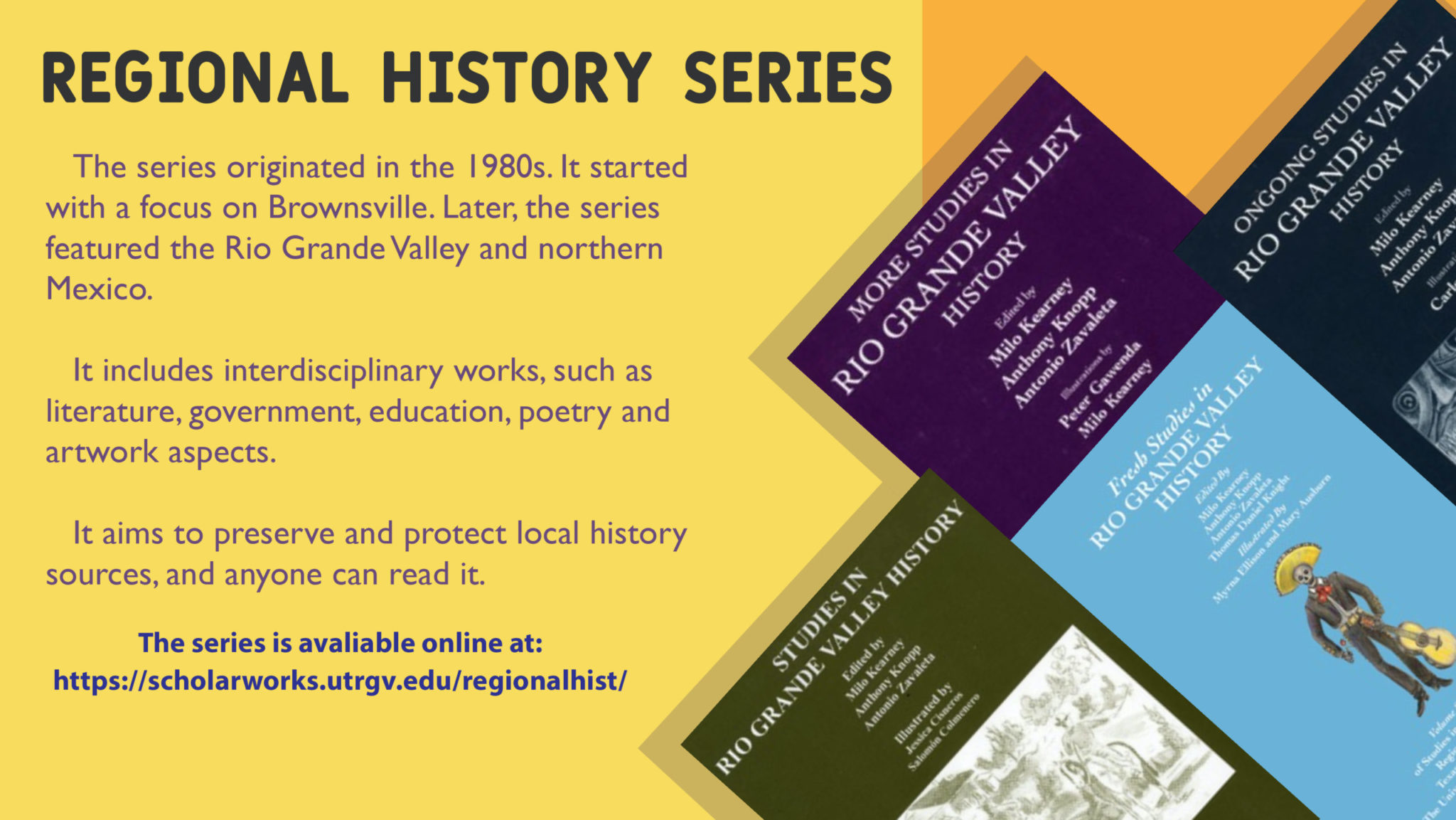
Sol Garcia | THE RIDER
Students who are interested in the Lower Rio Grande Valley’s history can learn more about it through the Regional History Series, which consists of articles and is virtually available through the University Library’s website.
The University of Texas at Brownsville and Texas Southmost College started the series in the 1980s, which originally focused only on the Brownsville area, said Thomas Knight, an editor for the series and chair of the UTRGV History Department.
The founding editors were Milo Kearney, Anthony Knopp and Antonio Zavaleta, who were all professors at UTB-TSC and are now affiliates of UTRGV. They decided to gradually expand to all of the Valley and Northern Mexico, including Reynosa, said Knight, who is also a history associate professor.
“They expanded to include the whole Valley and both sides of the borders,” he said.
After the merger of legacy institutions University of Texas at Brownsville and the University of Texas-Pan American, the series became sponsored by UTRGV and TSC, Knight said.
“After the merger, of course, it became UTRGV-TSC sponsored, so [the editors] all have an affiliation with the university,” he said.
That was when the editors decided to expand to the entire Valley, said Knopp, who is also an emeritus history professor at UTRGV.
“UTRGV reaches a wider geographic area than the University of Texas at Brownsville did, so we’re reaching, or trying to reach, for a wider audience more reflective of the … area that UTRGV serves,” he said.
Although the series started before UTRGV, it satisfies UTRGV’s mission, Knight said.
“We publish articles in English and in Spanish, as well as articles that are a mixture,” he said. “Sometimes, we have articles that are published in English, but they quote primary sources in Spanish or vice versa. … This is a bicultural, biliterate, bilingual emphasis of the university.”
The series is interdisciplinary and includes articles on government, education, literature, folklore and more, Knight said.
“It also publishes from time to time poetry and artwork, as well, by local artists and poets, so it’s really a mixture of different disciplines,” he said.
About three years ago, Knight worked with UTRGV Library staff to digitize the series. Currently, the 17 volumes in the series are available in PDF format, which is a good resource during the COVID-19 pandemic, the history professor said.
“You can access and do research and read without ever leaving your house, so it’s a good source, especially with the current situation that we’re dealing with,” he said.
The series can help students understand more about the Valley’s past and its relation to national and international history.
“It really helps to expand knowledge of the local history and how that relates to these larger national and international stories,” Knight said.
Additionally, learning about the region’s history can help understand prevalent issues, Knopp said.
“From learning the history of the region, you can understand better the issues and problems and challenges that exist today,” he said.
The editors are currently finishing a volume, Knight said.
“We’re finishing one volume now, which hopefully will be out in 2021,” Knight said. “Probably in late 2021 or early 2022 will be the next call for contributions.”
Contributors have included university professors from across the U.S. and other scholars from other countries, according to Knight.
“We have things from people who research and write about a wide variety of topics,” he said.
As a founding editor, Knopp said he is proud the Regional History Series has been ongoing for many years.
“We’ve managed to put out so many [volumes] over the years,” he said. “We’ve been able to keep it going, and we have thus preserved, through these articles, a lot of the history of this region.”
Arvin Treviño, an English senior, said this series is important because the Valley is an interesting region.
“The Rio Grande Valley is a very interesting region from other places in the United States,” Treviño said. “The history is mixed, possibly pure.”
He is interested in reading articles from the series and encourages other students to do so, too.
“It’s possibly true that history has been written and rewritten throughout time, and in order to have a true objective view of both sides, it’s best that people should read up,” Treviño said.
To view the series, visit scholarworks.utrgv.edu/regionalhist.






